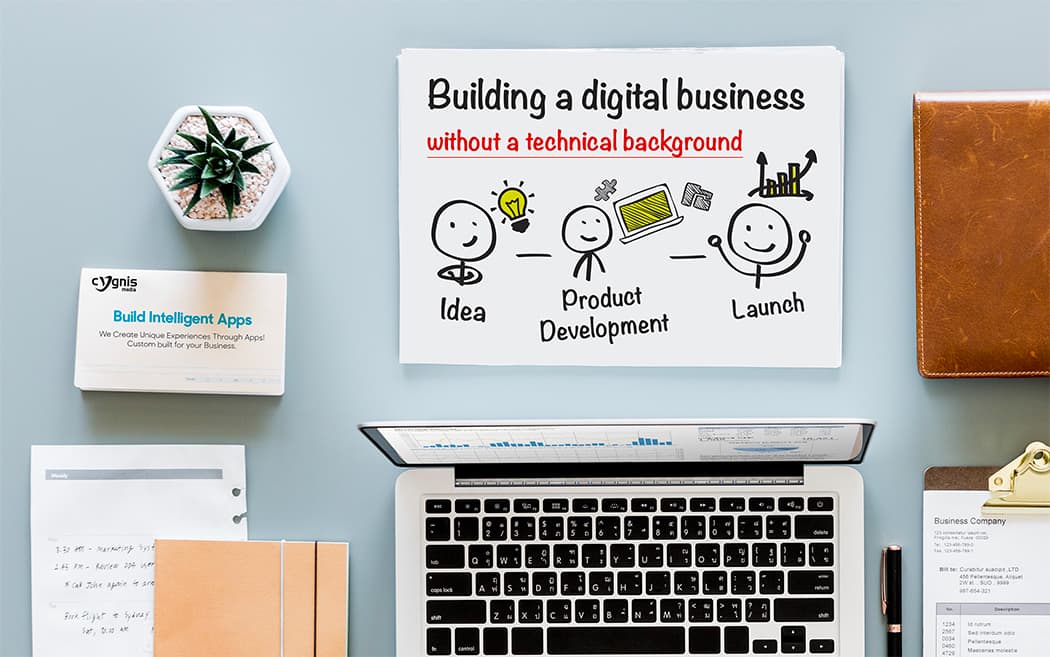We are often approached by people who are looking to build a new business that is centered around services provided to their customers via web & mobile applications. This could be anything from an Uber-like ride sharing service with a localized twist, to a novel new approach towards solving an existing real-world issue. The problem is that often times, while these people have a fantastic vision and valuable domain knowledge, all of which is vital to the project’s success, they may possess little-to-no technical knowledge or information regarding how to approach building digital products.
While that in and of itself is not a problem – because that’s where app development companies like us come in, serving as their technical partners – we often find that they want to approach building these products much like any other business they may have built in the past. Some of the pitfalls this leads to are:
1. Building all at once
Trying to conceive of and predict every possible offering and feature for the next 3-5 years and building all of it at once.
In today’s rapidly evolving world, this kind of thinking is disastrous. Not only does this elongate the amount of time it will take to go to market (since you will be busy perfecting and scrutinizing every single feature under the sun), there simply is no conceivable way they can accurately predict the state of their business 3-5 years down the line, before even gathering a shred of data from the users. You may end up spending months on a feature that learn your users don’t even care about, because you haven’t tested the hypothesis.
The best possible approach, which is adopted by a vast majority of technology product builders in this day and age, is to build an MVP (minimum viable product) first and get it to market. Then, collect data and user feedback to better inform your hypothesis and help you make more data driven business decisions.
Need to design a product?
Our team of user-experience designers can turn a project brief into a visual prototype, collaborating with you every step of the way.
2. Getting hung up on the 1% use-case
Wasting a disproportionate amount of time trying to solve the 1% use-case
. We’ll often find business owners getting absolutely obsessed and hung-up on the wrong things. It is impossible to solve for every single possible use-case and try to cater to every single person.
If you are spending a vast amount of time & resources trying to shoehorn in a feature or solve a minor inconvenience for 1% of your users, and in return getting distracted from the big picture (the 99%), you are doing something wrong. Unfortunately, this is a mistake repeated by product owners time and time again.
3. Tunnel Vision
Thinking that there is only one way to solve a problem is one of the most common pitfalls
. Sometimes individuals have preconceived notions of which they are so convinced, they are unwilling to listen to any alternatives. While they are well within their rights to demand their way is the only way forward – since they are ultimately to claim ownership and accountability – they would do well to consider that perhaps a team of people with far more experience and expertise in the subject matter would be well equipped to offer advice on best practices. It is important to try to approach these situations with an open mind and a willingness to consider alternative solutions.
Wrap up
Being a mobile & web applications development company that has (as of writing this blog post) worked on over 200 projects spanning various industries and verticals, we have observed that we have been able to do our best work when collaborating with our clients, instead of just developing for them.
Need to build a web application?
With cross platform compatibility, web apps remain the ultimate medium for a product. Tell us about your project for a free consult.
The projects that have been the most successful are those in which the product owners were keenly aware of what their personal limitations were, and constantly sought guidance & suggestions. They would be excited to consider and learn about new ideas, which would ultimately help to not only build the best version of their product possible, but increase their knowledge as well.
 Web Applications
Build web apps using cutting-edge technology
Web Applications
Build web apps using cutting-edge technology
 Business Intelligence Apps
Empower your business with fast & actionable BI Apps
Business Intelligence Apps
Empower your business with fast & actionable BI Apps
 Mobile Applications
Build cross-platform apps for iOS and Android devices
Mobile Applications
Build cross-platform apps for iOS and Android devices
 Internet of Things Apps
Streamline your operations with cloud-based IoT apps
Internet of Things Apps
Streamline your operations with cloud-based IoT apps
 AI Products
Unlock the power of AI & ML with our expertise
AI Products
Unlock the power of AI & ML with our expertise
 Minimum Viable Product (MVP)
Mitigate risks & accelerate your project development
Minimum Viable Product (MVP)
Mitigate risks & accelerate your project development
 Enterprise Software
Build custom enterprise solutions for your business
Enterprise Software
Build custom enterprise solutions for your business
 Software as a Service (SaaS)
Scale your business with ease and cost-efficiency
Software as a Service (SaaS)
Scale your business with ease and cost-efficiency



